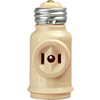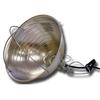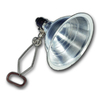OK, so now that I've been reading and shopping around...here's my dire question. I found some 42 and 85 cfl's. From your pictures, it appears you used

with a y-splitter---perhaps a couple of socket extenders as well?
I use ONE Extender, and ONE Y coupling with two 42s in the clamp refector. Two 65s, or two 85s are too large and create too much heat for the ballast and connectors.
The chick in the lighting dept. told me you could NOT use 42's and above in a clamp. (She also didn't direct me to this device either.)
I have done it for three years, with no issues or problems, iwth the bulbs burning 24/7 for 5 weeks straight..
She instead showed me something similar which only extends the bulb---the lower wattage at that. Because it was closing time, I didn't research any further. She also said that for the larger flourescents, I needed a "housing unit."
She was tring to help you light your yard, and sell you something else.
I don't know...not falling for it. I'm in no mood to be mounting anything to my walls either. As I said, my intention is to mimic your set-up as closely as possible. So, is "that" device the deciding factor as to whether or not you can use the larger flourescents in the clamps? And...you can plug other lights into it??? Sorry for all the questions that will probably seem stupid to you, but I always say "better to ask questions and be certain." Also, with an approximate 550 watts I plan to use, are 4 outlets safe for this?---"color me stupid".....I'm learning, slowly but surely.



















